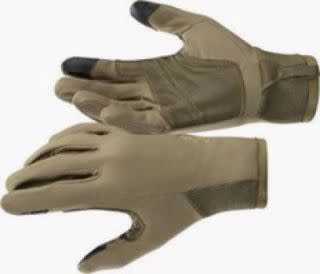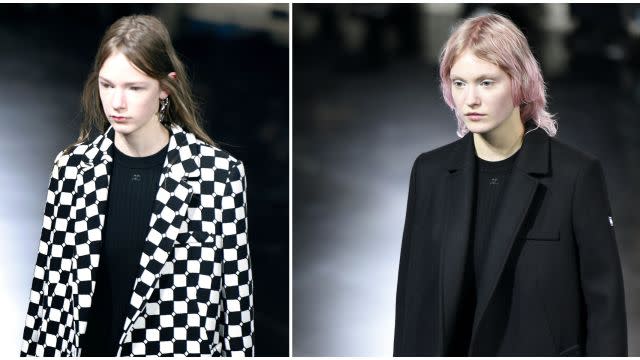A new high-tech fabric could mean the end of bulky layers in the winter

Imagine it’s freezing cold outside. Now imagine that instead of bundling up in a coat, all you need to do to feel comfortable is dial up the temperature of the base layer you’re wearing, like a heated seat in a car. Researchers from the US Army Natick Soldier Research, Development & Engineering Center are trying to make that scenario a reality.
At a conference of the American Chemical Society, Army researchers explained how they’re using a coating of fine silver nanowires on ordinary fabrics, such as cotton or polyester, as a way to potentially keep soldiers warm in extreme cold. The coating makes the fabric conductive, and with just a few volts of electricity, it can generate a substantial amount of heat. The researchers are working to develop a system that would allow soldiers to dial the heat up or down as needed, and Paola D’Angelo, one of the Natick researchers on the project, says the technology could ultimately make its way into consumer products too.

The fabric is conducting the electricity powering that LED light.
The Army started working on the coating to solve a very basic problem. The uniform soldiers wear in extreme cold can include up to seven layers, which makes it heavy and bulky. Inspired by the work of Stanford University researcher Yi Cui, whose team realized that silver nanowires could be used this way, the Army started working to optimize the coating.
“We have found out that if we hook up a battery or a power source to this coated fabric, we can increase the temperature of the textile by up to 110 degrees Celsius, which is an enormous change,” D’Angelo explained in a press conference Aug. 22. “Obviously the soldiers wouldn’t need that kind of heat. But it’s just to show you the potential of how much we can heat up the fabric with just three volts, which is basically a watch battery.”
That voltage was the amount needed to heat a 1-inch by 1-inch fabric swatch. A full base layer would require more. But batteries are heavy, so the team is trying to collaborate with a professor at University of California-San Diego who has devised a “a flexible, stretchable battery that can be incorporated within the textile,” D’Angelo said. “It’s basically weightless.” They’re also experimenting with a sweat-absorbing hydrogel that would keep soldiers dry.
The nanowire-coating is so fine that it doesn’t alter the flexibility of the fabric. It’s also robust. “We have done a few laundering tests with detergent and everything,” D’Angelo said.

Heat-generating gloves as imagined by US Army researchers, with other clothes to come.
D’Angelo and her team have so far optimized their coated fabric for gloves, but they may soon add clothing base layers. Ultimately, it could make its way into consumer products.
Some brands are already experimenting with heat-generating clothes, including at least one high-fashion label. At Paris Fashion Week last year, French label Courrèges showed a trio of beautiful coats fitted with an interior heating system. Control buttons on the left bicep could make the back, shoulders, and even pockets heat up.

It’s like wearing a heated car seat.

Sign up for the Quartz Daily Brief, our free daily newsletter with the world’s most important and interesting news.
More stories from Quartz:

